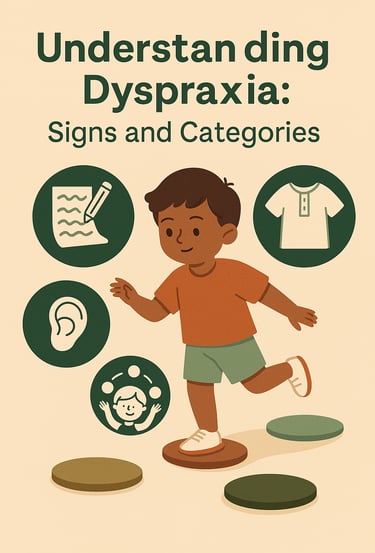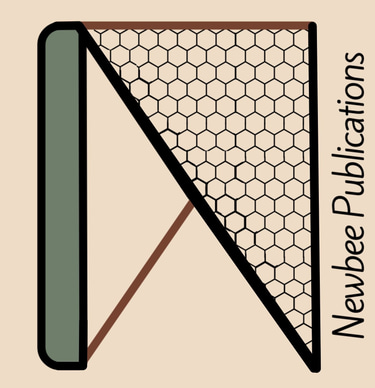Understanding Dyspraxia: Signs, Categories & Simple Home Supports
Research shows short, play-based practice at home consolidates clinic gains faster than weekly sessions alone .....
6/5/20252 min read


Understanding Dyspraxia: Signs, Categories & Simple Home Supports
1. What is Dyspraxia?
Dyspraxia (Developmental Coordination Disorder) is a neurological difference that affects the way the brain plans and coordinates movement. It can influence everything from pencil-grip to playground confidence, yet many children simply appear “clumsy” or “distracted” until someone joins the dots.
2. Six Key Areas to Watch
Drawing on the infographic above, parents and teachers can spot challenges in six overlapping clusters:
ClusterTypical DifficultiesEveryday Examples
Classroom tasks• Getting ideas on paper • Note-taking / copying from boardWritten work takes extra time; spelling tests feel overwhelming
Organisation• Memory for sequences • Needs visual reminders • Finds planning trickyForgets steps when dressing; loses homework even after packing it.
Gross Motor• Coordination (balance, hopping, stairs) • Sports/running confidencePrefers sidelines in PE; avoids bikes or climbing frames.
Fine Motor• Pencil grip & handwriting • Buttons & shoelaces • Manipulation skillsStruggles with crafts, fasteners, or using cutlery smoothly.
Communication• Immature-sounding speech • Words muddled or slow recall • Affected by background noiseTalks quietly in class; misunderstands multi-step verbal instructions.
Concentration• Poor working-memory skills • Easily distracted & fidgety • Limited focus unless tasks are broken downNeeds frequent prompts; gives up if an activity feels too long
Big takeaway: challenges rarely sit in just one box. A child might have brilliant ideas yet battle handwriting, or love talking but trip over playground obstacles.
3. Why Early Recognition Matters
Prevents frustration and “lazy/clumsy” labels
Opens doors to classroom accommodations (e.g., note-printouts, task-breakdown)
Helps peers understand and include—reducing stigma
Sets the stage for targeted therapy that builds genuine confidence
4. At-Home Strategies Parents Can Try Today
Visual checklists & colour cues – great for morning routines or multi-step homework.
Break big moves into mini-moves – practise shoelace loops separately before full bows.
Core-strength play – animal walks, cushion courses, trampoline time. Better balance = better handwriting posture.
Hand-skill workouts – play-dough, Lego®, tweezers to pick up beads, screw-top jars.
Timed “brain breaks” – 5-minute wiggle or sensory-bin pause between seated tasks.
5. When (and How) to Seek Professional Help
If several clusters above ring true and daily life is being affected, chat with:
Occupational Therapist (OT) – for motor-planning, handwriting, self-care skills.
Physiotherapist – for core stability and strength if gross-motor delays are big.
Speech-and-Language Therapist – if word-finding or articulation is also tricky.
Bring observations, school feedback, and even this infographic to your first appointment—professionals love real-life context.
6. Home-Based Therapy: Small Steps, Big Wins
Research shows short, play-based practice at home consolidates clinic gains faster than weekly sessions alone. Programmes like Locus Therapy’s home modules guide parents through 10-minute daily drills—turning therapy into a game, not a chore, and letting children celebrate progress in their own environment.
Bottom line: Understanding the why behind the wobble is the first super-power. With knowledge, compassion, and consistent home-based practice, children with dyspraxia can turn coordination challenges into confidence milestones—one carefully planned step at a time.
Contact us:
